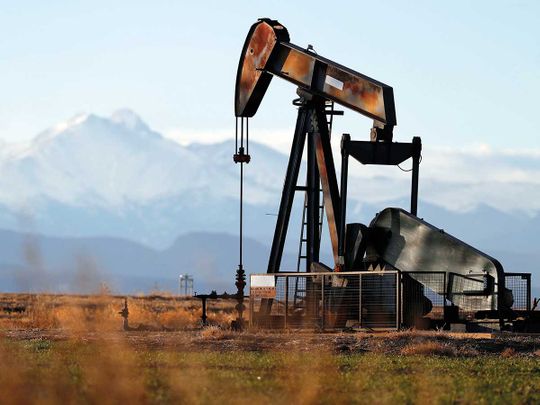
Abu Dhabi
Shale oil output in the US as well as compliance to Opec+ production cuts will determine the course of oil prices for the rest of 2019, analysts said.
Oil prices rose in the last few days due to US, China trade talks and on optimism that a deal would be reached between the two powerful countries to boost global economy and trade. Brent and West Texas Intermediate rose to a 2019 high of $67.75 per barrel at $57.81 per barrel respectively.
“For 2019, the key driver will be compliance with the Opec+ production cuts agreed to in December 2018. So far, Saudi Arabia has far exceeded what it has agreed to as part of the agreement, with the most recent news suggesting production will drop to 9.8 million bpd, 500,000 bpd (barrels per day) less what was agreed to in than the original decision,” Christopher Page, a senior analyst at Oslo based Rystad energy told Gulf News.
Opec (Organisation of the Petroleum Exporting Countries) and its allies including Russia are cutting production by 1.2 million barrels per day starting from January 1, 2019 to support oil prices and rebalance oil markets.
Kuwait and the UAE are also fully complying with the production cut agreement. Iran and Venezuela, which are formally exempt from the Opec deal, have also been contributing to overall year-on-year cuts in production due to the US sanctions on those countries.
“For Iran, we have production dropping approximately 800,000 bpd year-on-year relative to 2018, while Venezuela drops approximately 300,000 bpd in our forecast.”
“On the other side of the supply equation, Russia and Kazakhstan appear slow to comply with the agreement. Meanwhile, we have US production increasing by 1.65 million bpd, which is 450,000 bpd above our demand growth estimate of 1.2 million bpd for 2019. Thus, we believe the balance between this supply increase and the Opec+ cuts mentioned above will be the key drivers of oil price for 2019.”
Brent crude oil will be facing a band of resistance between $68.3 per barrel and $70 per barrel. Support can be found at $64 per barrel, according to Ole Hansen, head of commodity strategy at Saxo Bank.
He said crude oil continued to be carried higher on a combination of trade optimism and voluntary as well as involuntary supply cuts from Opec and Russia.
“Against this a surge in US crude oil production to 12 million barrels per day attracted plenty of headlines but limited market reaction. While the Opec+ group of nations will continue to curb supply and support the market the risk is rising that the market has already priced in a positive outcome of the trade talks between the US and China.”
Recent economic data continues to point to economic weakness, something a trade deal would struggle to arrest at this point, he added.












